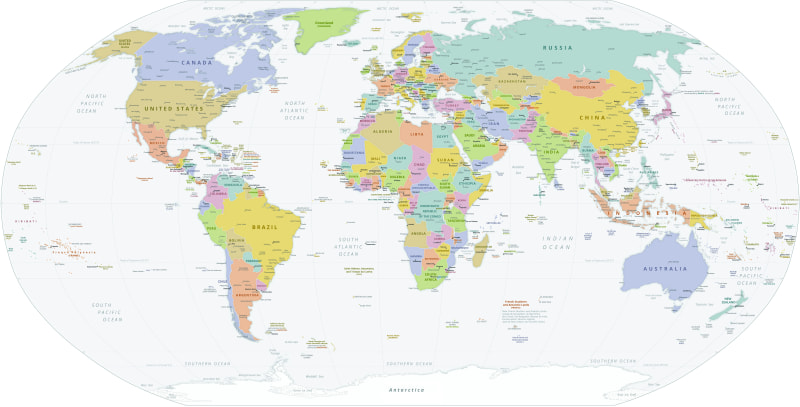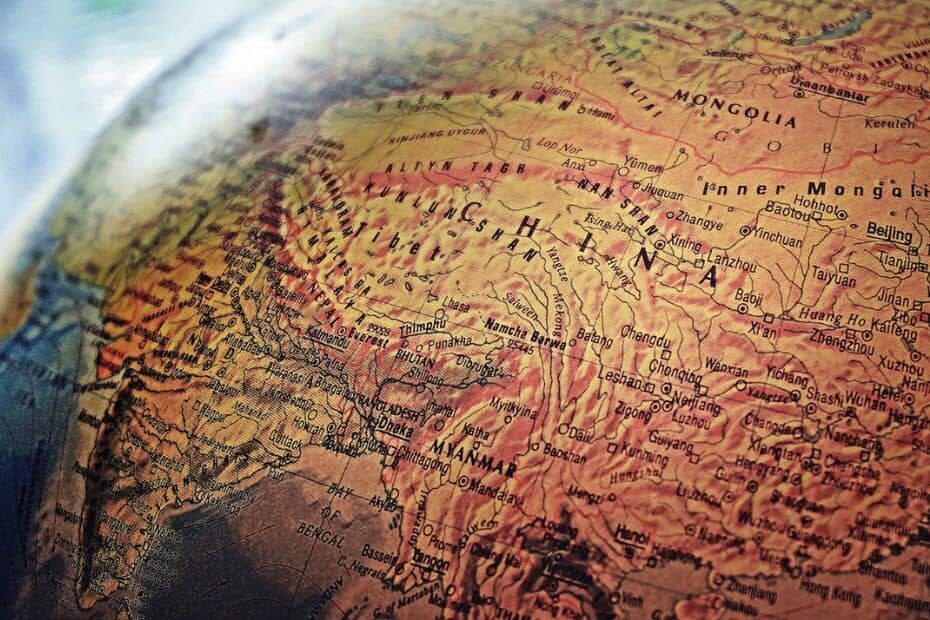Geography is the study of the earth’s surface, its features, and the relationships between the natural and human environments. It is a diverse and dynamic field that encompasses everything from the physical aspects of the earth to the social, cultural, and economic interactions that occur on its surface.
This article aims to provide an overview of the field of geography (What Is Geography), its history, key concepts, and sub-disciplines. We will also explore the significance of geography in various fields, including urban planning, natural resource management, and environmental studies.
Definition of the Word Geography?
The word geography is derived from the Greek words “geo” which means Earth and “graphia” which means to write or describe. Together, they mean to describe or write about the Earth.
Geography is an important field of study that helps us understand the world around us and the complex relationships between human societies and the natural environment. It provides insights into global issues such as climate change, resource management, and environmental conservation, and helps us to develop solutions to these challenges.
What is Geography?
Geography is the study of the earth, its features, and its inhabitants. It aims to understand the relationships between human and natural environments and the processes that shape them. Geographers use various methods such as maps, satellite images, and geographic information systems (GIS) to study and analyze spatial patterns and interactions.

History of Geography
Geography has a long and rich history that dates back to ancient times. The early Greeks, including scholars such as Pythagoras, Thales, and Anaximander, are credited with being some of the earliest geographers. They were interested in studying the physical features of the earth, including its mountains, rivers, and oceans.
Later, during the Hellenistic period, scholars such as Eratosthenes developed maps of the world and developed new methods for measuring the earth’s circumference. The Romans also made important contributions to the field of geography, particularly in the area of cartography, or mapmaking.
Ptolemy, a Greek scholar who lived in Alexandria, Egypt, in the second century CE, wrote a famous book called the Geographia that included maps of the known world at that time.

During the Middle Ages, the study of geography declined in Europe, but it continued to be studied in the Islamic world and in China. It wasn’t until the Renaissance, when Europeans began exploring other parts of the world, that geography once again became an important field of study.
During the 16th and 17th centuries, explorers such as Christopher Columbus and Marco Polo traveled to the Americas, Asia, and around the world, expanding European knowledge of geography and cartography.
Today, geography continues to be an important field of study, as scientists and scholars seek to understand the earth’s physical and human landscapes and the complex interactions between them.
Key Concepts In Geography
Geography is the study of the Earth and its features, including the physical and cultural aspects of the world. The discipline is centered around several core concepts that are fundamental to understanding geography. These concepts include space, place, time, scale, and the laws of geography.
Space
Space refers to the physical and social dimensions of the Earth, including its surface area, terrain, climate, and natural resources. Geographers use spatial analysis to study the distribution and relationships of different phenomena across space. Space is an essential component of geography because it helps geographers understand how different factors are distributed across the Earth.
Place
Place refers to the unique physical and cultural characteristics of a specific location on Earth. Every place has its own identity, which is shaped by its physical environment, cultural history, and social relationships. Geographers study places to understand how they are similar and different from one another.
Time
Time is a critical component of geography because it helps geographers understand how places and spaces change over time. Geographers study the past and present to understand how different processes, such as climate change or urbanization, have shaped the Earth over time.
Scale
Scale refers to the different levels of analysis used in geography, from local to global. Geographers use different scales to study different phenomena, from the microscopic to the macroscopic. Scale is important because it helps geographers understand how different factors interact across different levels of analysis.
Laws of Geography
Finally, the laws of geography refer to the fundamental principles that underlie the study of geography. These laws include the concepts of location, distance, spatial interaction, and region. These laws are essential to understanding geography because they help explain how different phenomena are distributed across space and time.
Essential Branches of Geography
Geography is a vast field that encompasses a range of sub-disciplines, each with its unique focus and approach to understanding the world around us. Here are some of the essential branches of geography:
Physical Geography
Physical geography is concerned with the study of the natural environment, including landforms, water bodies, climate, and ecosystems. It examines the processes that shape the Earth’s surface, such as erosion, weathering, and plate tectonics, and how they interact with each other to create the landscapes we see today.
Physical Geography is divided into several branches, including Biogeography, Climatology and meteorology, Coastal geography, Environmental management, Geomorphology, Glaciology, Hydrology and hydrography, Landscape ecology, Oceanography, Palaeogeography, Quaternary science and Pedology.
The study of Physical Geography helps us understand how the natural environment affects human activities and how human activities affect the environment.
Human Geography
Human geography is concerned with the study of human societies and their interactions with the environment. It examines how people live, work, and interact with each other in different parts of the world, and how social, economic, and political factors impact the environment.
Human Geography is divided into several branches, including Cognitive geography, Cultural geography, Health geography, Economic geography, Development geography, Historical geography, Internet geography, Political geography and Geopolitics, Population geography or Demography, Religion geography, Social geography, Transportation geography, Tourism geography and Urban geography.
The study of Human Geography helps us understand how humans have shaped the Earth’s surface and how the environment affects human activities.
Environmental Geography
Environmental geography is a relatively new sub-discipline that emerged in response to growing concerns about environmental degradation and climate change. It focuses on the study of the impact of human activities on the environment, as well as strategies for promoting environmental sustainability.
Geomatics
Geomatics is concerned with the study of geographic information systems (GIS), remote sensing, and other technologies used to capture, analyze, and interpret spatial data. It involves the use of satellite imagery, aerial photography, and other tools to create maps and analyze spatial patterns.
Cartography
Cartography is the study of map-making and map design. It involves the use of various techniques to create accurate and informative maps, including scale, projection, and symbolization.
Regional Geography
Regional geography is concerned with the study of specific regions of the world, including their physical, cultural, and economic characteristics. It examines the unique features that make each region of the world distinct, and how these features interact with each other to shape the region as a whole.
These are just some of the essential branches of geography. Each sub-discipline provides a unique perspective on the world around us, and together they help us to develop a comprehensive understanding of the complex relationships between human societies and the natural environment.
Conclusion:
Geography is a complex and diverse field that helps us better understand the world around us. From understanding the natural environment to studying human society and its interaction with the environment, geography has a wide range of applications in modern times. By studying geography, we can gain a deeper appreciation for the world around us and work to make it a better place for all.
FAQs:
Why is geography important?
Geography plays a crucial role in understanding and addressing global issues such as climate change, urbanization, and natural resource management. It provides insights into how human actions affect the environment and how the environment, in turn, affects human societies.
How can the study of geography help us create a better future?
By studying geography, we can develop sustainable solutions to global issues and create a better future for ourselves and future generations.
How is geography used in everyday life?
Geography is used in everyday life in a variety of ways, from finding our way around a new city to understanding weather patterns and climate change. It can also help us make informed decisions about things like where to live, where to travel, and what to do in an emergency.
What are some careers in geography?
There are a wide range of careers in geography, including urban planners, environmental analysts, geospatial analysts, and cartographers. Other careers in geography can include teaching, research, and international development.
